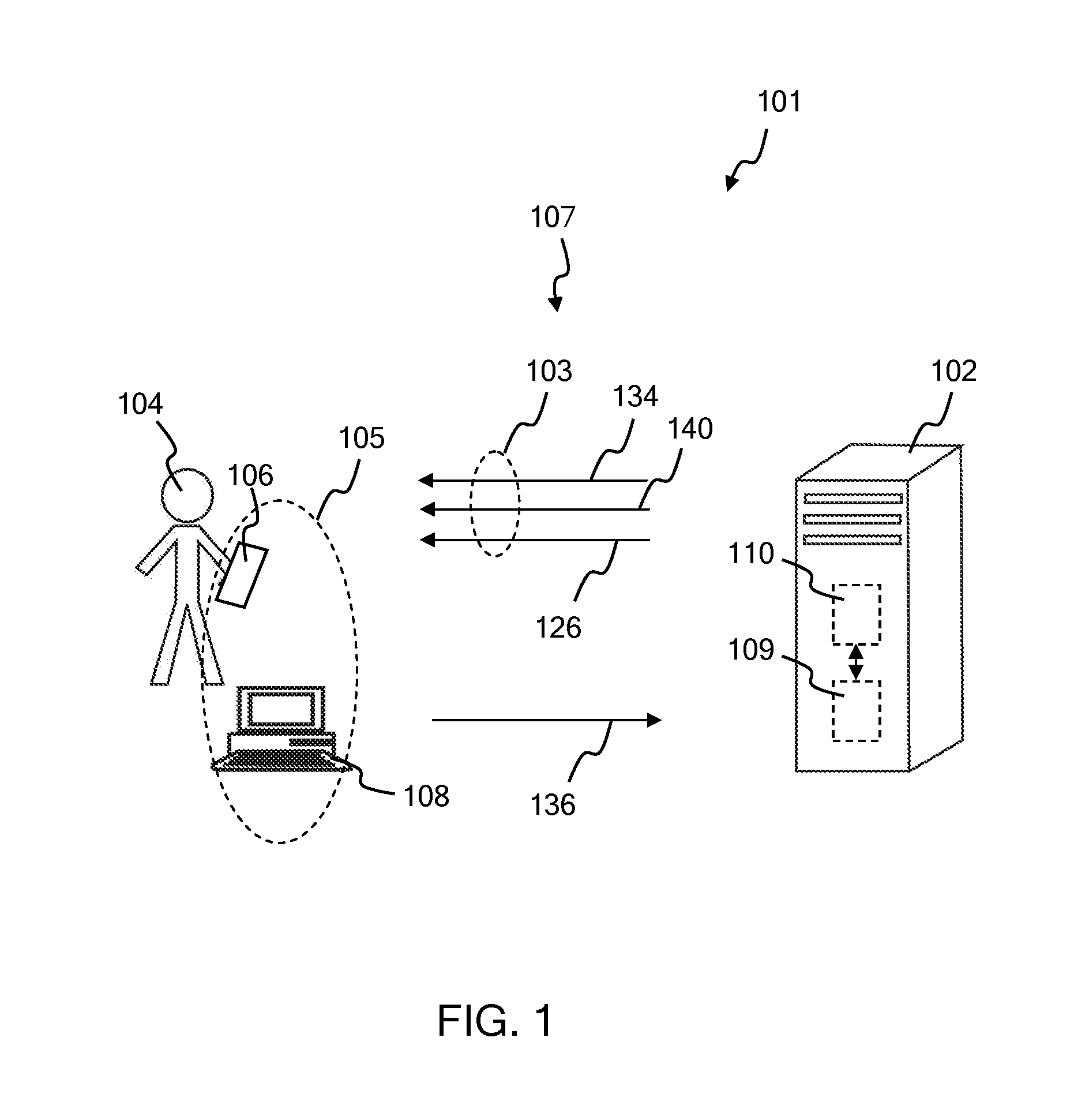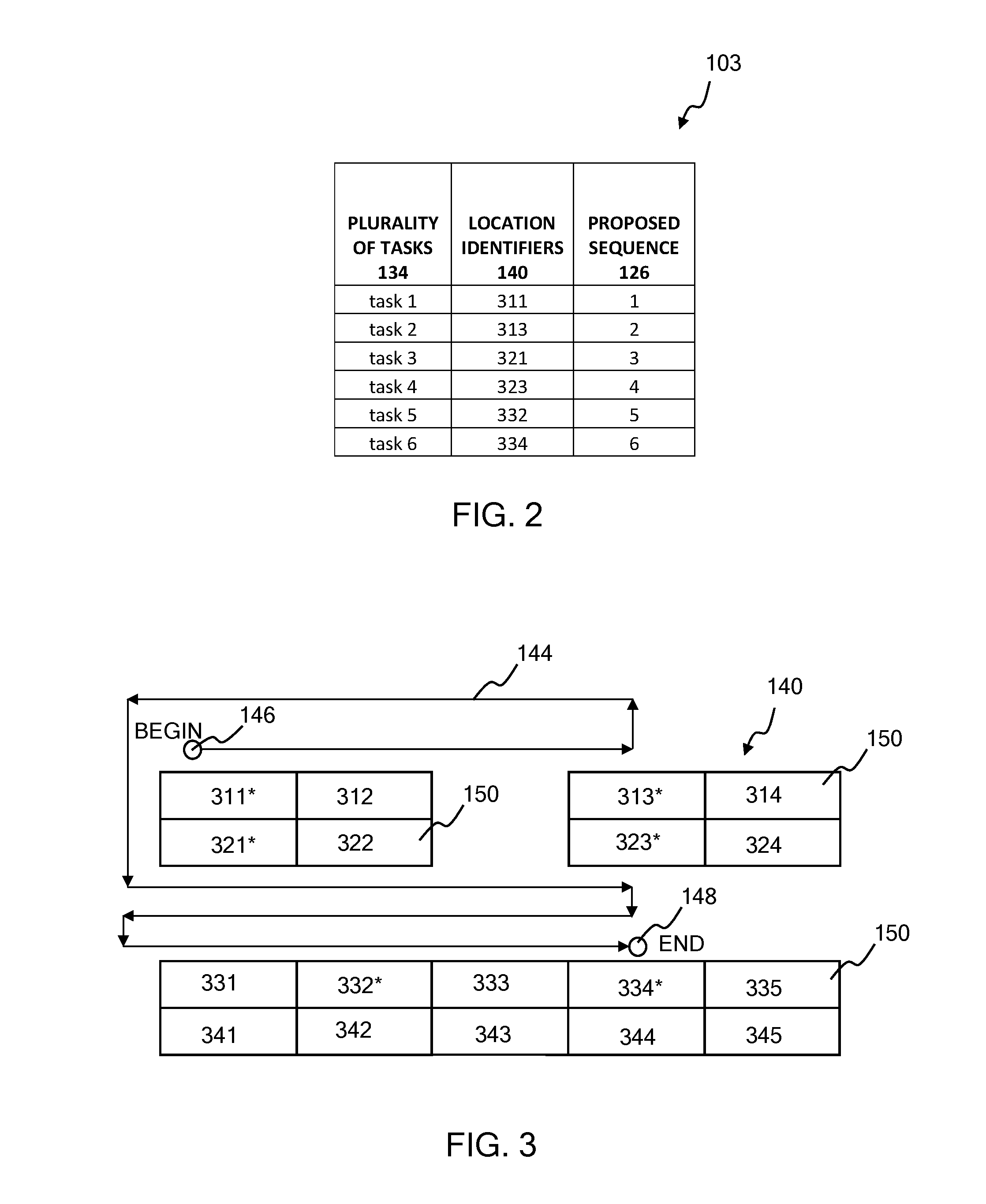System and method for determining a sequence for performing a plurality of tasks
a task and sequence technology, applied in the field of task management systems, can solve problems such as inability or unwillingness of employees to determine the sequence of tasks that will account for tasks
- Summary
- Abstract
- Description
- Claims
- Application Information
AI Technical Summary
Benefits of technology
Problems solved by technology
Method used
Image
Examples
example 1
[0061]In example 1, the employer is putting a high weight on the time factor, indicating that quicker sequences are better. In this example W1(prop) and W1(perf) are each 100,000, and each of the other weights are set equal to 1:
W1(prop)=W1(perf)=100,000;
and
W2(prop)=W2(perf)=W3(prop)=W3(perf)=W4(prop)=W4(perf)=W5(prop)=W5(perf)=1.
[0062]The factors for Example 1 have values of:[0063]Time factor (prop)= 1 / 600;[0064]Accuracy Factor(prop)=80;[0065]Amount Seq Used Factor(prop)=100;[0066]Safety Factor(prop)=100;[0067]Change Back Factor(prop)=100;[0068]Time factor (perf)=1 / 800;[0069]Accuracy Factor(perf)=100;[0070]Amount Seq Used Factor(perf)=100;[0071]Safety Factor(perf)=100; and[0072]Change Back Factor(perf)=100.
[0073]In Example 1, proposed sequence 126 has a shorter time between scans (600 versus 800), indicating proposed sequence 126 is a quicker sequence, but performed sequence 128 has a higher accuracy (100 for performed sequence 128, 80 for proposed sequence 126), indicating perform...
example 2
[0077]In example 2, the employer is putting a high weight on the accuracy factor, indicating that more accurate sequences are better. In this example W2(prop) and W2(perf) are each 4, and each of the other weights are set equal to 1:[0078]W2(prop)=W2(perf)=4;
and
W1(prop)=W1(perf)=W3(prop)=W3(perf)=W4(prop)=W4(perf)=W5(prop)=W5(perf)=1.
[0079]The factors for Example 2 have values of:[0080]Time factor (prop)= 1 / 75;[0081]Accuracy Factor(prop)=80;[0082]Amount Seq Used Factor(prop)=100;[0083]Safety Factor(prop)=100;[0084]Change Back Factor(prop)=100;[0085]Time factor (perf)= 1 / 100;[0086]Accuracy Factor(perf)=100;[0087]Amount Seq Used Factor(perf)=100;[0088]Safety Factor(perf)=100; and[0089]Change Back Factor(perf)=100.
[0090]In Example 2, proposed sequence 126 has a shorter time between scans (75 versus 100), indicating proposed sequence 126 is a quicker sequence, but performed sequence 128 has a higher accuracy (100 for performed sequence 128, 80 for proposed sequence 126), indicating perf...
PUM
 Login to View More
Login to View More Abstract
Description
Claims
Application Information
 Login to View More
Login to View More - R&D
- Intellectual Property
- Life Sciences
- Materials
- Tech Scout
- Unparalleled Data Quality
- Higher Quality Content
- 60% Fewer Hallucinations
Browse by: Latest US Patents, China's latest patents, Technical Efficacy Thesaurus, Application Domain, Technology Topic, Popular Technical Reports.
© 2025 PatSnap. All rights reserved.Legal|Privacy policy|Modern Slavery Act Transparency Statement|Sitemap|About US| Contact US: help@patsnap.com



